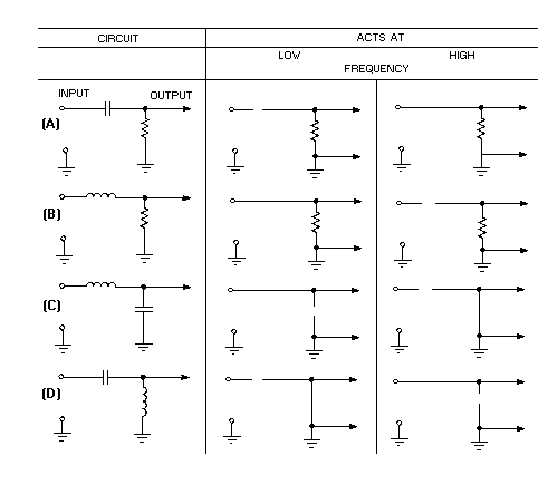1-33
If we apply these same principles to simple circuits, such as the ones in figure 1-14, they affect input
signals as shown. For example, in view (A) of the figure, a low frequency is blocked by the capacitor
which acts as an open and at a high frequency the capacitor acts as a short. By studying the figure, it is
easy to see how the various components will react in different configurations with a change in frequency.
Figure 1-14.—Reaction to circuit by change in frequency.
As mentioned before, high-pass and low-pass filters pass the specific frequencies for which circuits
are designed.
There can be a great deal of confusion when talking about high-pass, low-pass, discrimination,
attenuation, and frequency cutoff, unless the terms are clearly understood. Since these terms are used
widely throughout electronics texts and references, you should have a clear understanding before
proceeding further.
HIGH-PASS FILTER. A high-pass filter passes on a majority of the high frequencies to the next
circuit and rejects or attenuates the lower frequencies. Sometimes it is called a low-frequency
discriminator or low-frequency attenuator.
LOW-PASS FILTER. A low-pass filter passes on a majority of the low frequencies to the next
circuit and rejects or attenuates the higher frequencies. Sometimes it is called a high-frequency
discriminator or high-frequency attenuator.

